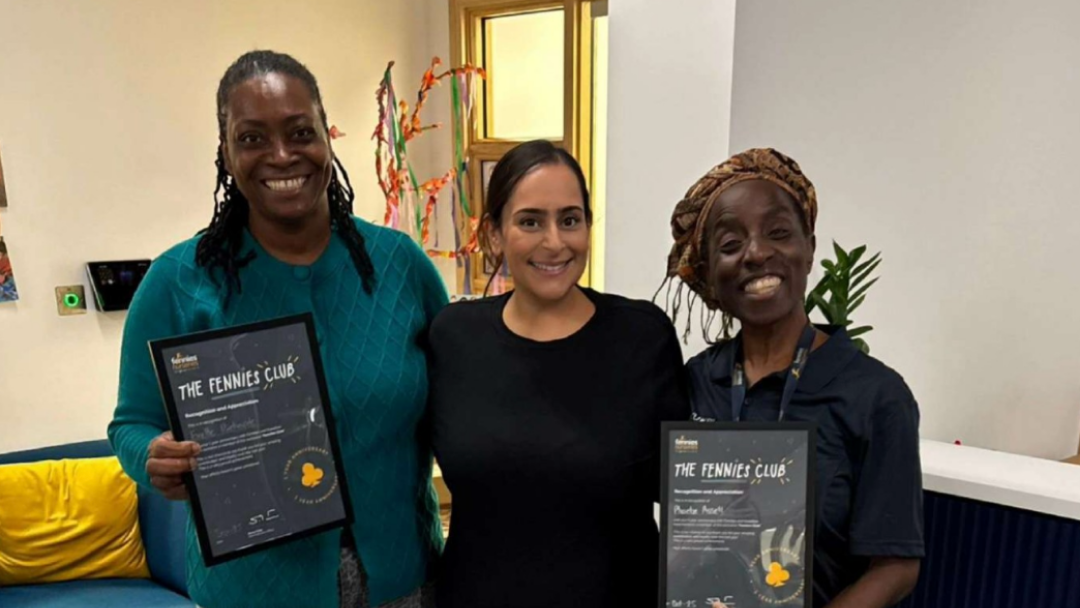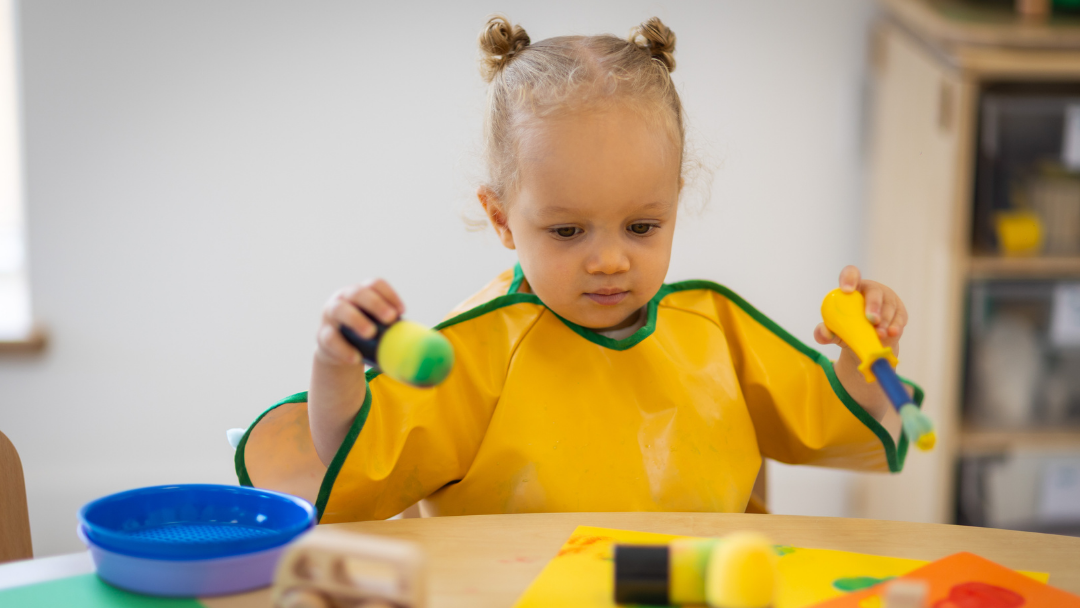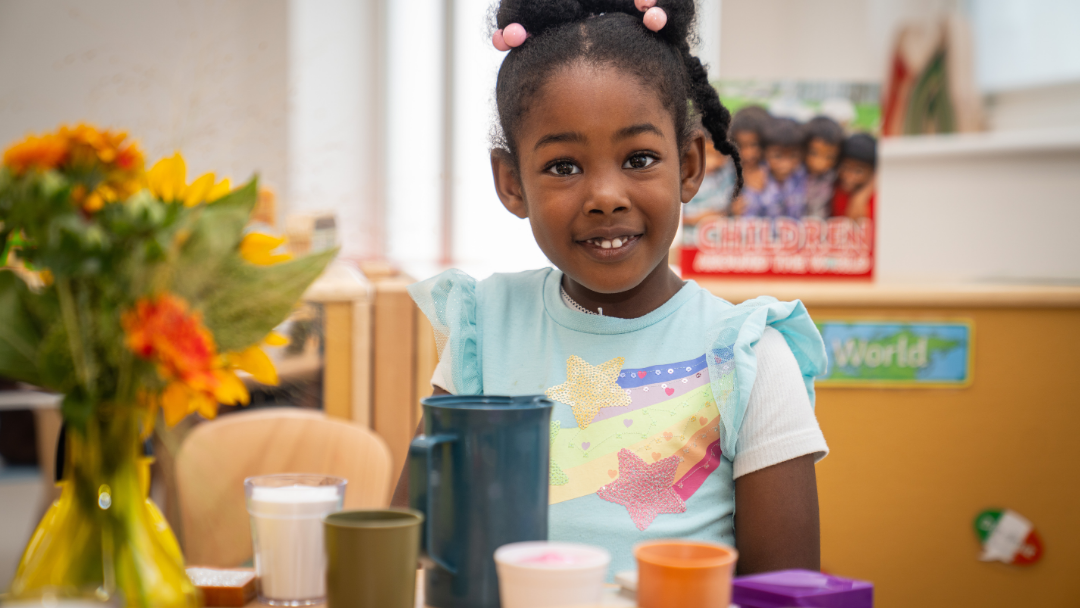Fennies are proud to be accredited by the Early Years Nutrition Partnership (EYNP) for our menus and contribution to supporting good nutrition in the early years. As part of our subscription, we are delighted to bring you regular nutrition updates and evidence-based articles written by our Registered Nutrition Professionals from EYNP, Janet Aylott, and Catherine Lippe. This months’ topic: Edible sensory play ideas.
Sensory play using food can be a great way to encourage children to interact with and explore a variety of foods. As parents, we tend to head straight for the end goal of eating foods and might get frustrated that our child won’t even try new food. What we often overlook is that there are many sensory steps for a child to progress through before they reach the endpoint of eating. This starts with simply tolerating being near the food and moves through all the senses, from smelling the food, touching the food, tasting the food and finally eating and swallowing the food.
If we want children to learn to enjoy food, we must first ensure that they are comfortable being near it and exploring it. Sensory play using food is a great way to achieve this and can often be more successful than simply exposing your child to the food at mealtimes.
This is because the child may feel less pressure to eat the food if it’s playtime and not mealtime. Less pressure often means the child feels more relaxed and willing to explore and interact with the food.
Here are our favourite sensory play activities using food that you could try at home with your child at home:
Painting with fruits or vegetables
Try using asparagus stalks, carrot sticks, broccoli or cauliflower florets as a paintbrush. You could also try making your own edible paints by squishing raspberries or blueberries, using yoghurt, tomato ketchup, turmeric or paprika mixed with water to create your very own edible masterpiece!
Scoop and explore with sensory bowls
Place different foods in bowls and encourage your child to scoop, pour, mix and explore the bowls as they wish. Foods might include dry rice or beans, cooked pasta, dry cereal e.g. cornflakes, yoghurt or frozen peas.
Give them a spoon or cup for scooping and pouring, a small spoon for mixing and allow them to use their hands. Notice which foods your child will touch willing with their hands and which they prefer to use utensils for. Are they more reluctant to touch the wet or slimy foods or the dry foods?
Colour match
Take a selection of coloured bowls, cups or containers that you have at home and find some foods that match each colour. Encourage your child to match the food with its corresponding-coloured container e.g. place strawberries in the red bowl, sliced bananas or cheese in the yellow bowl, peas in the green bowl and carrot slices of orange segments in the orange bowl.

Stack and build
Slice a carrot and a cucumber into thick slices. Take it in turns to stack the cucumber and carrot in alternate layers. See how tall you can make the tower before it tumbles!
Cooking together
Even young children can help whisk, stir and mix ingredients. Find a recipe you would like to make together and encourage your child to help with mixing, pouring, measuring and weighing. Allow your child to smell and taste the ingredients as you cook if they wish to. They may be more likely to taste the finished product if they have helped to create it but remember not to put pressure on them to try. Food play should be fun and pressure-free.

Food Sensory Bags
Place different fruits and vegetables inside a cloth bag and ask your child to feel and smell the food through the bag. Can they guess what it is? Reveal the food and see if they guessed correctly.
Growing activities
You don’t need to be green-fingered or have your own vegetable plot to enjoy growing activities together. Try growing cress, lettuce or herbs in a small container on your windowsill. Enjoy watering the seeds and watching them grow.

Role play with real food
Create a teddy bears picnic, shopkeeping game or play kitchen role-play activity. Offer your child a selection of suitable real foods from your kitchen to use in their game. You can talk to them about what the foods are, what colour they and how they feel in your hand as a way of encouraging them to recognise and interact with the food. Remember not to put pressure on them to try the food.
Hide and seek
Take three plastic cups and place them upside down on the table. Hide a food, e.g. carrot slice, cracker or hard-boiled egg, underneath one of the cups and mix them up. Ask your child to select which cup the food is hidden underneath. Take it in turns to be the hider and the seeker.
Monster soup
Select a variety of ingredients and place them on the table or on a wipe-clean sheet on the floor or in the garden. Allow your child to create their own monster soup using ingredients of their choice. This one can get messy but mess equals fun when it comes to food!
Try to take precautions against the mess and allow your child to get stuck in! For example ingredients for your monster soup might include flour, dried lentils, dried cereal, water, chopped fruits or veg, frozen peas or whatever other suitable ingredients you have at home. You could link this activity to a book your child likes about monsters or aliens if you have one at home.

Fennies are proud to be accredited with the Early Years Nutrition Partnership and we actively teach children the importance of a balanced lifestyle by incorporating food into their daily activities.
FAQ
Subscribe to our newsletter
Stay up to date with Fennies news





.png)




.png)